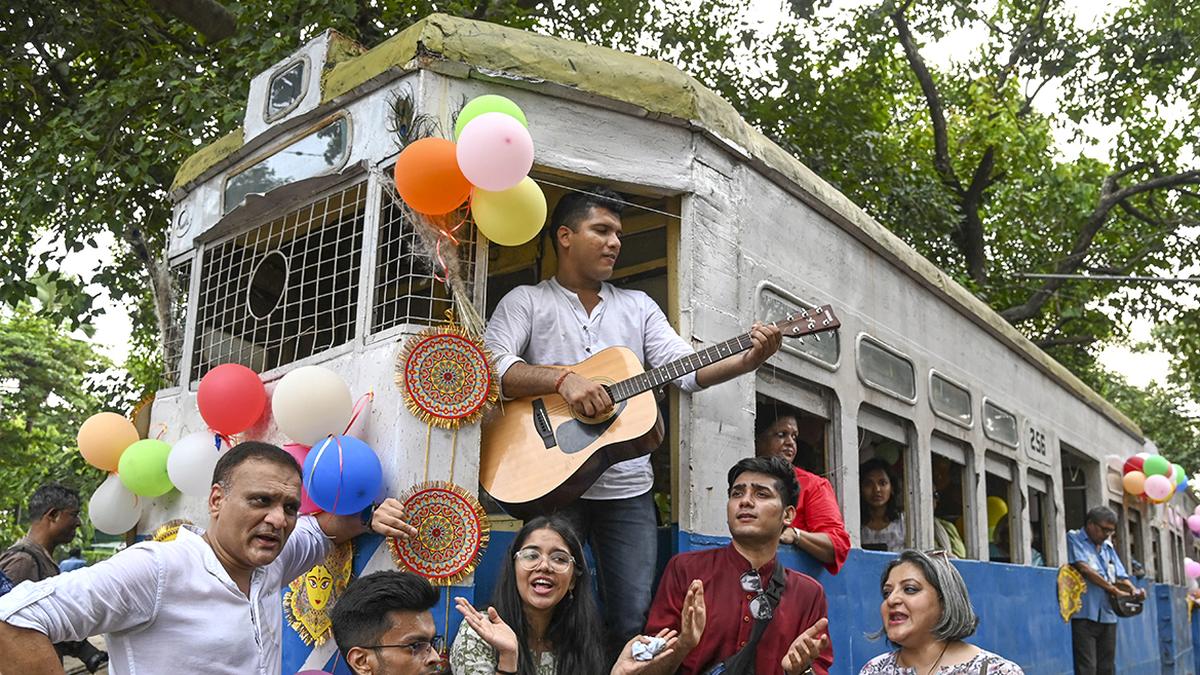
Kolkata tram trundles back to familiar atmosphere of neglect and protests — a sign it is still alive
The Hindu
Kolkata tram users fight to save historic mode of transport from government's attempts to shut it down.
Life is back to normal in Kolkata as far as its 152-year-old tram is concerned: two of the three surviving routes are functional again after a long and anxiety-filled break during Durga Puja; the West Bengal government appears as determined to do away with it; and the prominent tram users’ association is continuing to hold demonstrations — it held one on Friday evening — to demand complete restoration of this gentle mode of transport.
“At present, only two routes are in operation, where service frequency is totally unreliable. The WBTC (West Bengal Transport Corporation) is clearly sabotaging the tramway, with corruption extending to every sphere of its activities. There are innumerable examples that prove WBTC is deliberately destroying the tramway with the ultimate aim of vacating depot lands for sale to real estate promoters,” alleged Debasish Bhattacharyya, president of Calcutta Tram Users’ Association (CTUA).
Friday’s CTUA protest, which took place at the Tollygunge tram depot, was initially planned to demand restoration of the third surviving route, Ballygunge-Tollygunge, which was shut down temporarily about four months ago due to pipeline work; but by Friday they had more things to protest against as media reports showed bituminisation of not-in-use tram tracks in Alipore.
The court is to decide the future of the Kolkata tram, and it has forbidden any move against it, such as covering tracks with asphalt, until a decision is taken. The State government, on its part, has made it very clear that it wants trams out of Kolkata’s roads in the belief that they were contributing to congestion, something that tram lovers completely disagree with.
Mr. Bhattacharyya, a retired scientist, last month presented the case of the Kolkata tram at a conference in Manipal University. “It was a conference to highlight the need for every section of the society, for example senior citizens, economically weaker people, women and children, physically challenged people, etc, for free mobility. All experts opined that the tram was essential for a city,” the CTUA president said.
“The Ballygunge-Tollygunge route — the only south Kolkata route — remains suspended for nearly four months even though the pipeline work has long been completed. The Kolkata Municipal Corporation is intentionally withholding permission. In the meanwhile, three running cars were left unattended for three months at the Ballygunge terminal where parts have been stolen. In the history of Calcutta Tramways Company, it has never happened that tramcars were left unattended for vandalism,” Mr. Bhattacharyya added.
Urban transport activist Arghyadip Hatua, a member of CTUA, said that instead of shutting down the tram, the State government should invest in upgrading the infrastructure and integrating it with the metro and bus service. “This modernisation would keep trams as a viable, environmental-friendly transport option, creating a more cohesive transit system for the city. If suspended routes are reinstated and the system is upgraded, trams can serve as efficient feeders to other transit modes, easing the overall traffic burden and offering a more inclusive public transport option,” Mr. Hatua said.











